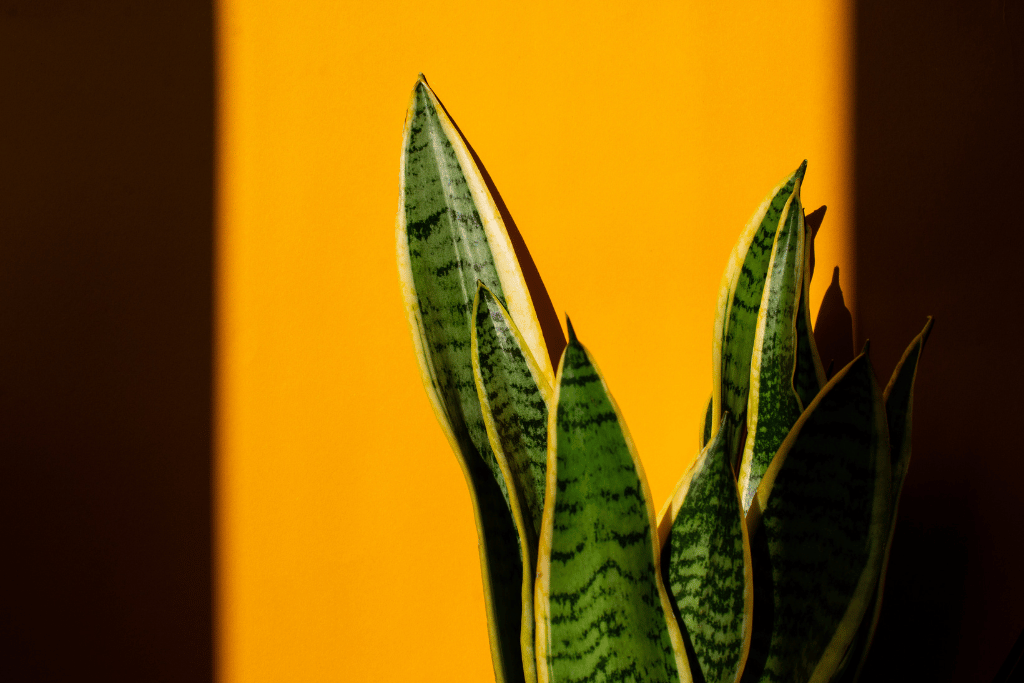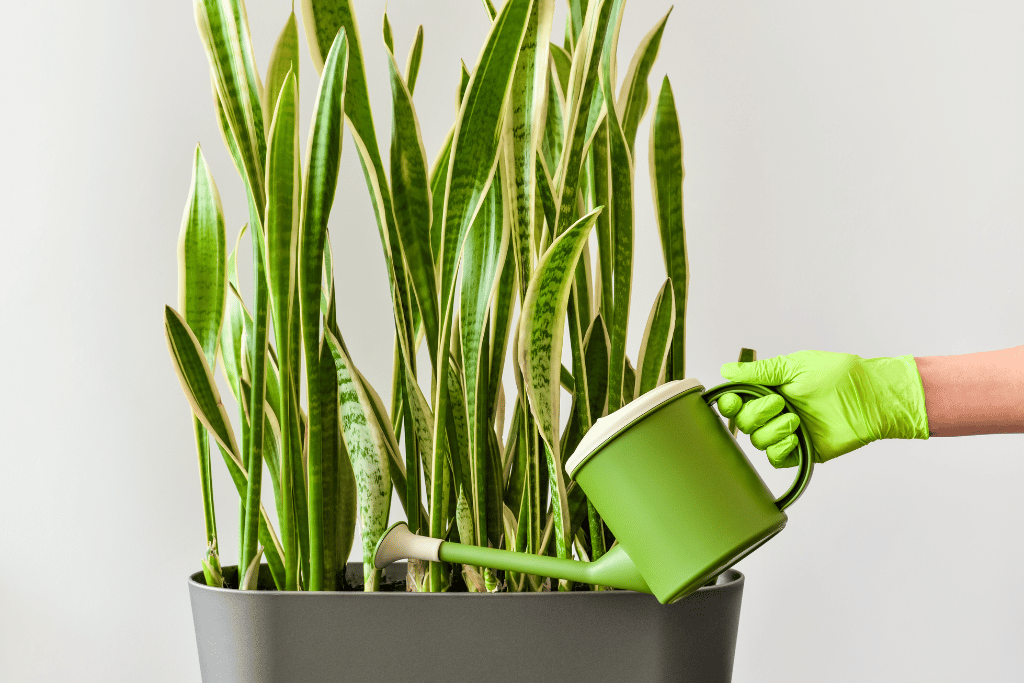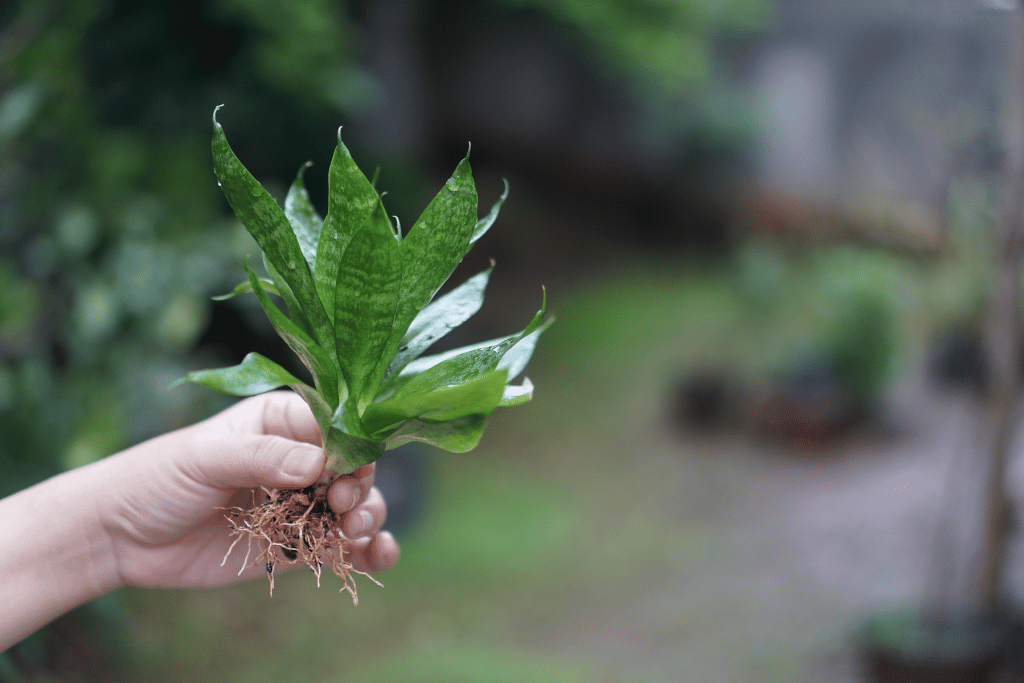
The snake plant, botanically known as Dracaena trifasciata, is a low-maintenance houseplant well-suited for indoor environments. It is a succulent with tough foliage and can grow up to 5-6 feet if provided with the right conditions. Also known as mother-in-law’s tongue, this plant can withstand low light and drought conditions too. However, many people wonder whether they can grow snake plant outdoors.
Even though it is a sturdy plant, you will face challenges growing snake plants outdoors. Therefore, our discussion today will revolve around those challenges and how you can tackle them.
But first, let us answer the big question right away.
Can Snake Plants Grow Outdoors?
The short answer is yes. Snake plants can grow outdoors and even bloom faster in bright light. However, growing them outdoors is more challenging than indoors. Snake plants are sensitive to cold. They are naturally found in tropical environments. If you keep them in an environment below 50 degrees Fahrenheit for a long time, they will have a hard time surviving.
But that’s not all. When growing snake plants outdoors, full sun or bright sunlight for an extended period is also detrimental. It can be as damaging for them as chilly weather.
Therefore, here are the things you need to consider if you wish to have a fulfilling experience when growing these plants outdoors.
Temperature Considerations
Temperature is the most serious consideration when growing snake plants outdoors. For starters, you should ideally be in a geographical area with an overall warmer temperature. USDA hardiness zones from 8-11 will be safe if you’re in the US. Generally, a temperature between 55-90 degrees Fahrenheit is considered safe. These plants can even tolerate slightly higher temperatures but place them in a shaded area nonetheless.
Things get tricky on the lower end of the temperature. Snake plants are not cold-hardy and can not survive long in temperatures below 50 F. If you’re in a region that experiences such temperatures, it is best to grow potted snake plants outdoors and bring them inside when it gets too cold.
Similarly, if you’re growing them in a greenhouse, adjust the temperature to above 50 F even when it’s chilly outside. Even if you can not bring your plants inside immediately, it is wise to cover them with a heavy cloth. This will help them retain warmth and live out the cold night until you make arrangements to bring them indoors.
Sunlight and Placement
Even though snake plants are succulents and fairly drought-resistant, it is wrong to assume they can tolerate harsh sunlight. As a general rule, any place with partly-lit/shady areas to even well-lit areas is safe. This makes them perfect for growing outdoors in bright and indirect sunlight.
However, strong, harsh, and direct sunlight can be quite harmful, especially if they are exposed to it for long hours. Direct sunlight can dry them out quickly and make their leaves wilt and fall off.

Therefore, choose an area that faces south or west to plant them outdoors. It is ideal to give them a mix of indirect and direct light(early morning is even better) without overexposing them. You can also place them outdoors near a wall. The shade from the wall will limit your plant’s direct sunlight exposure throughout the day.
Watering Requirements
Snake plants don’t need constant watering, and overwatering can cause problems like root rot, mushy leaves, or plant death. You should only water them when the soil feels wholly dried out. This can vary depending on the humidity, pot size, plant size, and temperature.
The location where you have planted your snake plant is also crucial. For instance, if you’ve planted them in the ground, you should ensure that they are not close to the plants that require frequent watering. Keep ample distance, ideally 6 feet, between your snake plants and other water-hungry plants. Planting them in pots or planters can eliminate this problem too.

On the other hand, some signs of underwatering to look out for are yellow leaves or white tips. Even if you’re late to water them, they can survive for about 2-6 weeks, which means that overwatering is much more dangerous than underwatering.
Planting them where they’re exposed to winter rain is quite harmful. Similarly, they require significantly less water in winter. If you have to water them in winter, do so early in the day to give excess water plenty of time to evaporate and drain. Lastly, you should never water your snake plants if they are placed outdoors during extreme cold.
There are also right and wrong ways of watering your snake plants. Start by pouring water around the edges if your plant is potted. If potted in the ground, water close to the soil. Take special care to protect the leaves from the water, and keep watering until the soil is soaked. Make sure to add proper drainage for potted plants.
Misting
Unlike other plants, snake plants don’t need misting. They are succulents, which means their leaves already contain sufficient water to keep them hydrated even when it’s dry outside. Misting can lead to excess moisture and the development of fungus on foliage.
Soil Guidelines
Snake plants prefer dry and well-draining soil. Sitting in moist soil for a long time can harm them and lead to diseases like root rot or soggy, mushy, and yellow leaves. Therefore, choosing coarse, loosely packed, and fast-draining soil is most suitable. It will let the excess moisture drain quickly and reduce damage from overwatering.

A soil mix with perlite, sand, or pumice added to standard garden soil is suitable. You can also purchase a potting mix made for tropical plants, cacti, or succulents. It is also vital to replace soil when needed, such as when a fungal or nematode infection is observed.
Repotting
You may need to repot your snake plant every 2-3 years for healthy growth. Repotting helps the roots grow freely, makes the plant more resilient, and makes it look healthier.

Here are a few steps to repot your snake plants:
- Pick a container at least two to three inches wider than the previous container.
- Cover the bottom of the pot/planter with pebbles to protect drainage holes from getting clogged.
- Cover the pebbles with a thick layer of well-draining soil.
- Remove the plant from the old pot carefully and gently place it in the new one.
- Fill the pot with the new soil.
- Water the plant sufficiently and wait for it to dry before watering again.
Fertilizer
Snake plants don’t need fertilizers as much. However, feeding them 2-3 times a year can promote better health and growth. Fertilizer can be especially beneficial during the growing season, which lasts from spring to late summer.
As for the type, it is best to feed it with a well-balanced all-purpose fertilizer. You can also go with slow-release or liquid fertilizers. However, organic fertilizers such as manure, worm compost, or cow dung should only be used rarely.
Just like there are appropriate times for fertilizing your snake plants, there are times when you shouldn’t fertilize them.
Times When You Shouldn’t Fertilize Snake Plants
- Young snake plants fresh from a nursery or a new environment need time to adjust. It is best not to fertilize them at this point.
- Fertilizing your snake plants in winter is unwise. Plants need minimal nutrients during this resting period.
- Avoid fertilizing seedlings that have just sprouted.
Diseases and Pests
Snake plants are fairly resistant to common plant diseases and pests. But if they’re outdoors, there is an increased chance of your plants coming in contact with such things. Moreover, warmer climates tend to encourage the growth of pests. Some of the pests that most commonly affect snake plants are:
- Spider mites: Small insects that look like brown or yellow spots on the leaves.
- Scales: Insects that appear like small brown bumps on plant’s leaves.
- Mealybugs: Fuzzy, small, and white insects
Snake plants are also susceptible to fungal diseases. For example, if you have overwatered your plant, or its leaves stay wet for a long time, they can develop fungus. Pests can eat up your plants’ leaves, while fungus can cause them to rot.

Rub neem oil or rubbing alcohol on the plant’s leaves to get rid of these pests. For fungus, keep the plant well-drained at all times, keep the leaves dry, and give it plenty of sunlight. You can also add fungicide to your potting mix to keep fungal infections at bay.
Grooming
You might be concerned about periodic maintenance and grooming when growing snake plants outdoors. As already discussed, these plants are tough and can sustain challenging weather conditions if the temperature is tolerable.
You don’t need to spend as much time grooming and maintaining them as with other plants. However, it is a good idea to wipe the leaves down regularly and keep them clean, shiny, and dry. You can also cut off damaged/dead leaves periodically to keep your plant looking healthy and tidy. If some of its leaves are damaged because of cold weather, they’re beyond the point of revival, and it is better to cut them off too.
You also need to trim your snake plant periodically if you wish to keep it to a specific size. Snake plants can be pruned to a third of their original size every 2-3 years.
Final Words
If done correctly, you can definitely grow snake plants outdoors.These plants have many advantages, yet there are snake plant disadvantages. Temperature and sunlight are some of the most critical factors to consider. Other than that, these plants are relatively easier to maintain, whether inside or outside.
Follow the guidelines in this article, and your snake plant will look healthy and lively throughout the year. If you choose to grow them outdoors, it is best to do so in pots or planters for easier maintenance and safer growth in lower temperatures.
Frequently Asked Questions (FAQ)
Can snake plants handle direct sunlight?
Snake plants outdoors can handle direct sunlight, but not for extended periods. It is best to keep them in a place where they get limited direct sunlight throughout the day.
How often to water a snake plant outdoors?
The best way to judge if an outdoor snake plant needs watering is to check the soil. If the soil is completely dry, it is time to water your snake plant. Underwatering your snake plant is less harmful than overwatering it. Read more about the overwatered snake plant.
Will potted snake plants survive outdoors in the cold?
Potted snake plants can survive temperatures ranging from 55-90 degrees Fahrenheit. Temperatures below 50 F can be challenging for their survival. However, you can always bring potted snake plants inside when it gets too cold for them.



